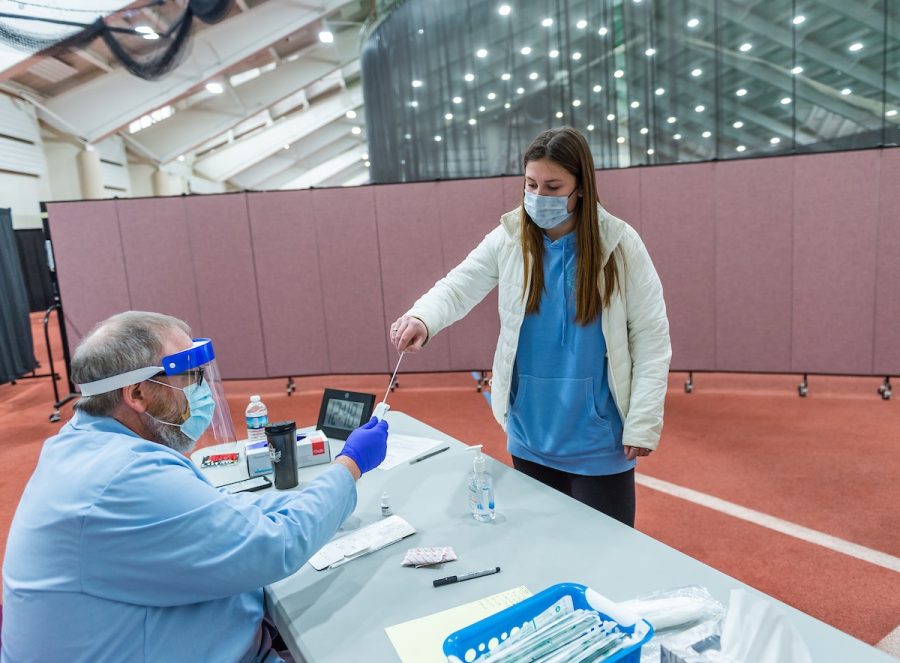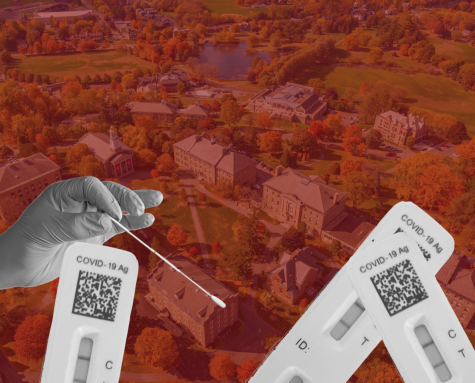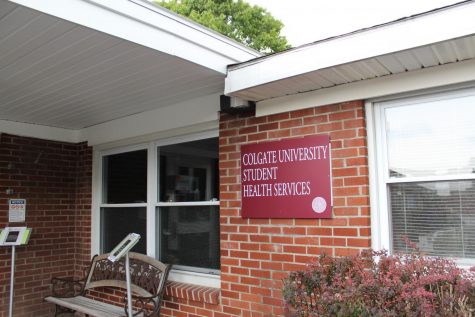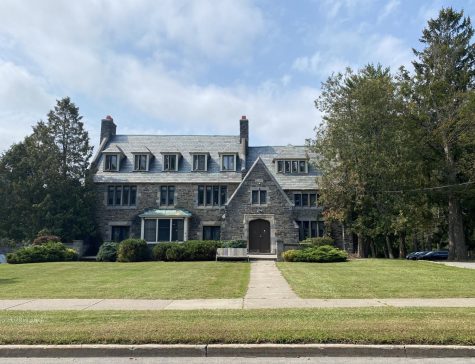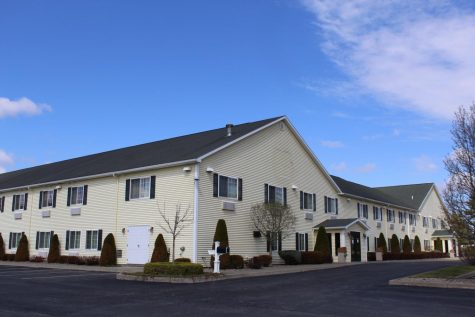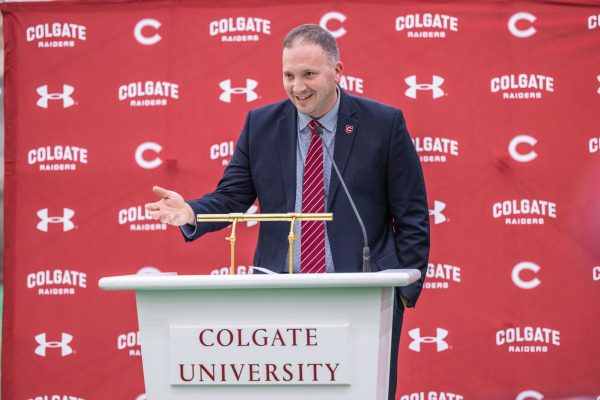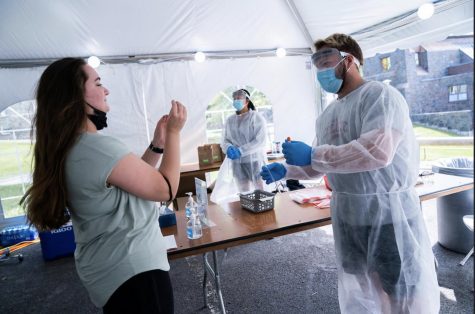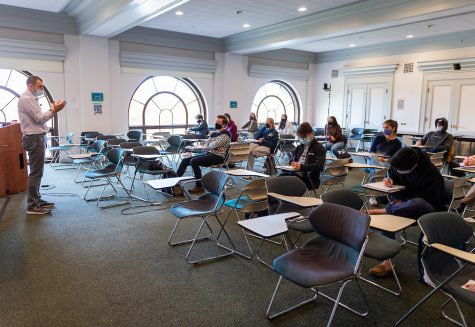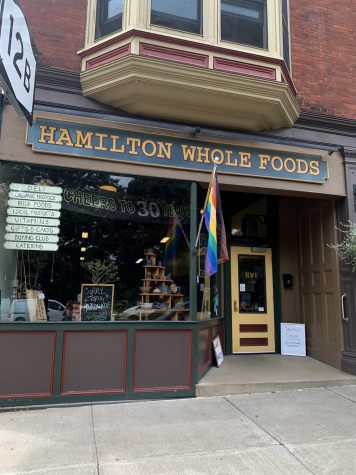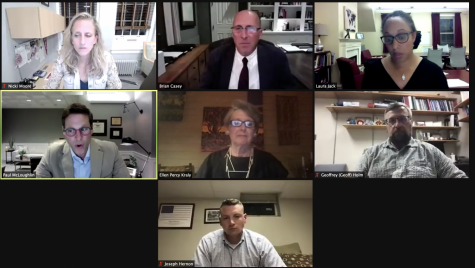Testing Non-Compliance Causes Concern
Increased COVID-19 testing of the on-campus community as a means to monitor infection rates and progress through Colgate’s gates of reopening faster was one of the major changes between the Fall 2020 and Spring 2021 semesters. However, student non-compliance with testing appointments has caused concern amongst University administrators.
Vice President for Communications Laura H. Jack wrote in her Jan. 30 Colgate Digest email that more than 200 students had failed to appear for their scheduled round-two COVID-19 test that day.
“This means that our move to Gate 1 is in jeopardy,” Jack wrote. “To those who skipped today’s testing, I say this: As part of your Commitment to Community Health, you committed to more frequent testing this semester. Violations of the commitment will be swiftly addressed. You said you would do this, and you can. A second arrival test is something you’ve done before.”
Jack informed the students who had missed their test on Saturday, Jan. 30 that they should be tested the following day, Sunday, Jan. 31, at the same time and location at which they were originally scheduled.
Community Health Student Compliance Manager Stacey Millard said that when testing concluded on Jan. 31, there were still 45 students who did not appear for their original scheduled test and had not made up their missed appointment. Additional testing was set up on Monday, Feb. 1.
“Students who were not compliant with testing by the end of the day Monday, Feb. 1 (as well as their parents) were sent a letter informing them that they would be required to complete the semester remotely if their test was not completed by 4:00 p.m. Tuesday, Feb. 2,” Millard said. “All 45 students who missed their initial post-arrival testing appointments, and their parents, were issued a warning informing them that any further Community Health Violations (testing-related or otherwise) would result in a transition to remote status without further warnings.”
Most members of the administration agreed that the students who missed their tests likely either forgot or were unaware of their scheduled test time or location.
“Many students cited missing emails, losing track of time or their appointment card. We do understand that there is a lot to keep track of at the start of any semester; however, testing is an added responsibility that is an essential part of our plan to remain open and was something that all students committed to by signing the Commitment to Community Health and returning to campus,” Millard said. “While we empathize with the challenges of meeting various obligations, these are not permissible reasons to miss testing and are students’ responsibility to the University and to one another.”
President Brian Casey estimated that the students who repeatedly failed to go to their scheduled test received dozens of notifications.
“The final thing was, ‘If taking this test is something you don’t want to do, then you’re going to have to go home,’ because to be here means you’re part of a testing protocol. I think that final message brought it home,” Casey said. “No one was sent home as a result of this because I think people complied. We’re just like, ‘Hey, if you want to be here you get tested.’ That’s the deal.”
All students on campus had been tested by the end of the day on Tuesday, Feb. 2, according to Millard.
Associate Vice President for Campus Safety Dan Gough emphasized the importance of COVID-19 testing to maintain campus safety.
“The [county and statewide] infection rates right now are still significantly higher than they were in the fall,” Gough said. “Because of the higher infection rates, it is exponentially more important that we identify positive cases and close contacts of positive cases as early as possible to control the infection on campus.”
The delay in results caused by those who missed their initial testing times prolonged the University’s universal quarantine and delayed progression to Gate 1.
“We had to wait for those 50 extra results to come in, so that added a day to the end of quarantine. I was originally scheduled to meet with the [Health Analytics Team] and look at those results on a Wednesday, and we had to move it to a Thursday because we weren’t going to have all the results back in time,” Gough said. “That continues to be the case for the rest of the gates. And the reason being is because we can’t accurately assess the public health status if people aren’t going to testing.”
A number of students who appeared at their scheduled time and were tested mistakenly received an email saying they had not, according to Millard.
“There were a small number of students who were tested and then received my message related to noncompliance,” Millard said. “This is the result of a delay in our testing provider’s system sending an update to our internal student checklist system. In every case it was rectified and their results were matched in both systems. In these situations, students are not responsible for any Community Health violation,”
Sophomore Matt King recalled feeling confused and concerned after receiving a notice from the University that said he had failed to fulfill his testing requirement even though he appeared at his allotted time and location and took his test.
“When I first got the email, I was freaking out and started to try and fix the problem while I was in class,” King said. “I was pretty worried about the possible repercussions so I was emailing everybody I could to try and fix the problem.”
He remarks that, while stressful, the situation was resolved in a timely manner.
“The whole problem took place during both my morning classes, so I was not really able to focus on them. I first heard back from someone after about a half hour and the entire situation was resolved in about two hours,” King said.
As an additional measure to confirm the accuracy of the University’s testing records during surveillance testing and prevent a delay in matching records, students will now be asked to present their ‘Gate Card when checking in for their test.
“That way, we can confirm a student’s test has been completed by their check-in status and their results rather than waiting for our testing partner to report the testing sample has been entered into their system,” Millard said.
Surveillance testing began the week of Feb. 8 with the University’s entrance into Gate 1. During Gates 1 and 2, all members of Colgate’s on-campus community will be tested every two weeks.
After receiving test results from the first week of surveillance testing, Jack reported that there were no new cases of COVID-19 in her Feb. 12 Colgate Digest email. However, Jack also wrote that not all students selected for this round of testing appeared for their appointment.
“About 10–15% of students skipped their testing appointments, so we will be missing crucial data when we do a complete review of this week’s numbers. And, as we know, data drive our progress through the Gates,” Jack wrote.
Casey expanded on the importance of student compliance with surveillance testing.
“If 100 people aren’t [attending their surveillance test appointment] then the whole thing is worthless,” Casey said. “That is how it goes. If a certain percent are not tested, then all the other tests are barely useful.”
Those who miss their scheduled surveillance test will receive a warning letter. Students will have a short window of time to make up their test.
“If testing is not complete in that make-up window, they will be asked to depart campus and to complete the semester in a remote learning format for the remainder of the semester without further warning,” Millard said.
The compliance rate for post-arrival testing in the Fall 2020 semester was considerably higher than the current rate, causing concern among administration members.
In terms of all violations to the Commitment to Community Health, Millard noted fewer reports of mask violations on campus than last semester. However, she also noted a number of increases in other violations.
“We are noticing an increase in violations at the Wendt where students are required to close-contact quarantine or isolate in place. Because of the seriousness of these violations in terms of infection control, these violations are treated seriously. We have also seen more cross-residence hall visitation and in-room gatherings this term than we did at this time last fall,” Millard said.
As of Feb. 14, commitment violations stood at low alert and was trending towards increasing alert on the Health Analytics Dashboard.
“We do plan to notify parents and families earlier as we follow up on Commitment to Community Health violations. Our objective is to mitigate the public health risk as swiftly and effectively as possible; we believe the partnership between students, the University and families will be the most effective way to do that,” Millard said. “Enforcement of the Commitment to Community Health is our obligation to all students. Students’ obligation to one another and to the University is to comply with this Commitment so that we do not have to ask students to depart campus.”


